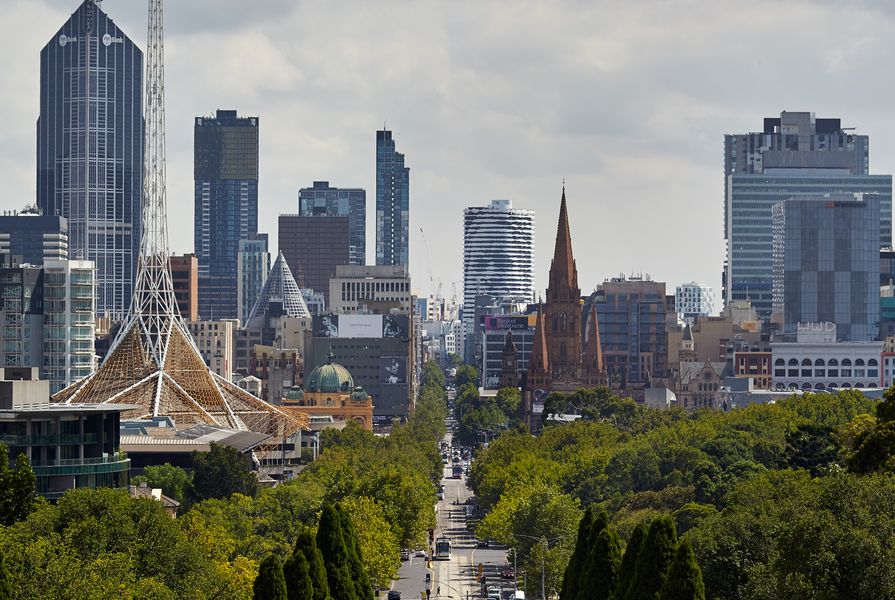As Kerstin Thompson writes in her opinion piece “Beyoncé or Barak”, the residential building “shell” is “the site for us to direct our efforts if we wish architecture in Melbourne to be instrumental in the quality and nature of higher density apartment living.” Our apartments need “less skin, more bones”, Thompson says, if they’re to work well. Creative façades and excellent apartment design, however, are not mutually exclusive. Big buildings must do far more than simply provide amenity for the people who live in them.
It goes without saying that proportions, space, light, air and spatial relationships are fundamental to high quality design. But our role as architects must extend far beyond these considerations to participating in our city and engaging with the social agenda of a building’s residents and the wider public. Good buildings are empowered – in fact, obliged – to contribute to culture and to urban and historical context. Is this not “influencing the formation of our cities”, in which Thompson says architects have lost ground?
The “Barak” in Thompson’s title refers to our Swanston Square apartment tower, which features a 31-storey image of historic Wurundjeri Elder William Barak. Thompson says that our collective architectural intelligence is misdirected on Melbourne’s multi-residential industry. There is no reason to suppose that architectural funds, time or effort were misdirected in designing the Barak façade. While her piece doesn’t criticise the apartment designs (whether or not she has been inside), she trivialises the building’s dual raisons d’ être.
The façade image is not tantamount to “putting lipstick on pigs”, as Thompson suggests (nor, for that matter, is Elenberg Fraser’s pending “Beyonce” tower). Besides quality homes targeted to their market, our Swanston Square tower offers a visual and cultural statement to the community. Surely a structure of its scale and location (at the northern tip of Melbourne’s main civic axis and visible all the way to the Shrine of Remembrance at the southern end) owes the public something significant to look at. Something much more than the bland outcome of an exhausted ideological agenda of pure functionalism.
Furthermore, the civic relationship of the Barak façade with the Shrine represents the juxtaposition of deep but ongoing Indigenous culture with modern Australian history. It has not gone unnoticed. Since Swanston Square’s unveiling, the Barak image has triggered a level of media discourse (mainstream and social) that is unprecedented in residential buildings. Public discussion has explored Indigenous architecture and representations of Indigenous people, and raised awareness of Barak and Wurundjeri history and culture. This can’t be bad.
As for apartment design, we all know that architects don’t select sites or set briefs. Design is driven by a variety of forces: location, physical and socio-economic conditions, developers, price points, planning constraints and the appropriate urban response to a ground plane and a city. The list goes on. As architects, it is our role – and challenge – to balance these forces and deliver a range of real housing choices of high architectural and urban quality. We must cater for the almost incomprehensible diversity of people buying and/or living in Melbourne’s apartments. We need variety in size and amenity to meet all markets, both within each building and across all the buildings in the city.
Thompson seems to suggest that the architectural profession suffers from a waning relevance, that we are in damage control, “rearranging deck chairs on the Titanic.” She recommends we direct our efforts strategically, stripping back our offerings to the basics and dispensing not just with creative façades but interiors, too. Putting aside the question of whether we really are in such dire straits, decorating, or even fully furnishing, your own apartment is not for everyone. What about shared households? Temporary residents? What about international students stepping off a plane and into their CBD apartment, ready to begin university within days? We designed and appointed Swanston Square apartment tower for that very real section of our community.
In her article “Boldly Petite”, Thompson refers to Swanston Square as “the ARM beast”, comparing it with JCB’s “petite” Upper House apartments. Beast? Really? Is it possible that she simply prefers smaller buildings and is assessing ours against criteria irrelevant to the inherent bigness of a 31-storey tower?
In both articles, Thompson rightly points to the issue of minimum standards limiting innovation. There is indeed a whiff of the nanny state in the idea that governments are well placed to protect buyers from housing choices. As architects, we need to remain the custodians of this responsibility. We need the freedom to continue exploring ways of delivering the best possible designs within the inevitable constraints.
Meanwhile, Victoria’s non-prescriptive regulatory environment has led to many excellent design outcomes and housing that is more affordable than in many comparable cities.
















